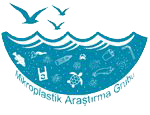Within the scope of the research project carried out by our group and supported by Tübitak with the code 117Y212, raw microplastic pellet pollution of the sandy beaches on the shores of Iskenderun Bay was revealed.

Pellet pollution index (PPI) was calculated for the beaches as a tool to assess beach pollution by microplastic pellets. Hydrometeorological conditions, including wind, current, wave, surface run-off, and precipitation, were examined during 2018 to reveal the effect on the transport of microplastic pellets within the study area. Sea-surface heights, including the astronomical tide and the storm surge and the wave runup heights, were also considered in the analysis to study the extent of hydrodynamic forcing on the beach. Hydrometeorological assessments indicated that the pellet concentrations in the coastal zone are mostly related to wind-induced transport. Three major river discharges are considered as the main source of microplastic pellets effluents. A Lagrangian particle transport model was conducted to reveal the possible beaching hotspots of microplastic pellets released from these river mouths. Average microplastic pellets were calculated as 126.04 ± 54.08 items/m2 for May 2018 and 70.22 ± 18.25 items/m2 for November 2018. An overall mean PPI for May 2018 was calculated as 1.13, indicating a moderate degree of pellet pollution, and 0.56 for November 2018, indicating a low degree of pellet pollution. The simulations showed that Orontes River effluents affected the inner Iskenderun Bay coasts more than the Seyhan and Ceyhan River.

The research has been published in the journal Science of the Total Environment, one of the most respected journals in the field. To reach the details of the study: https://doi.org/10.1016/j.scitotenv.2022.153676

